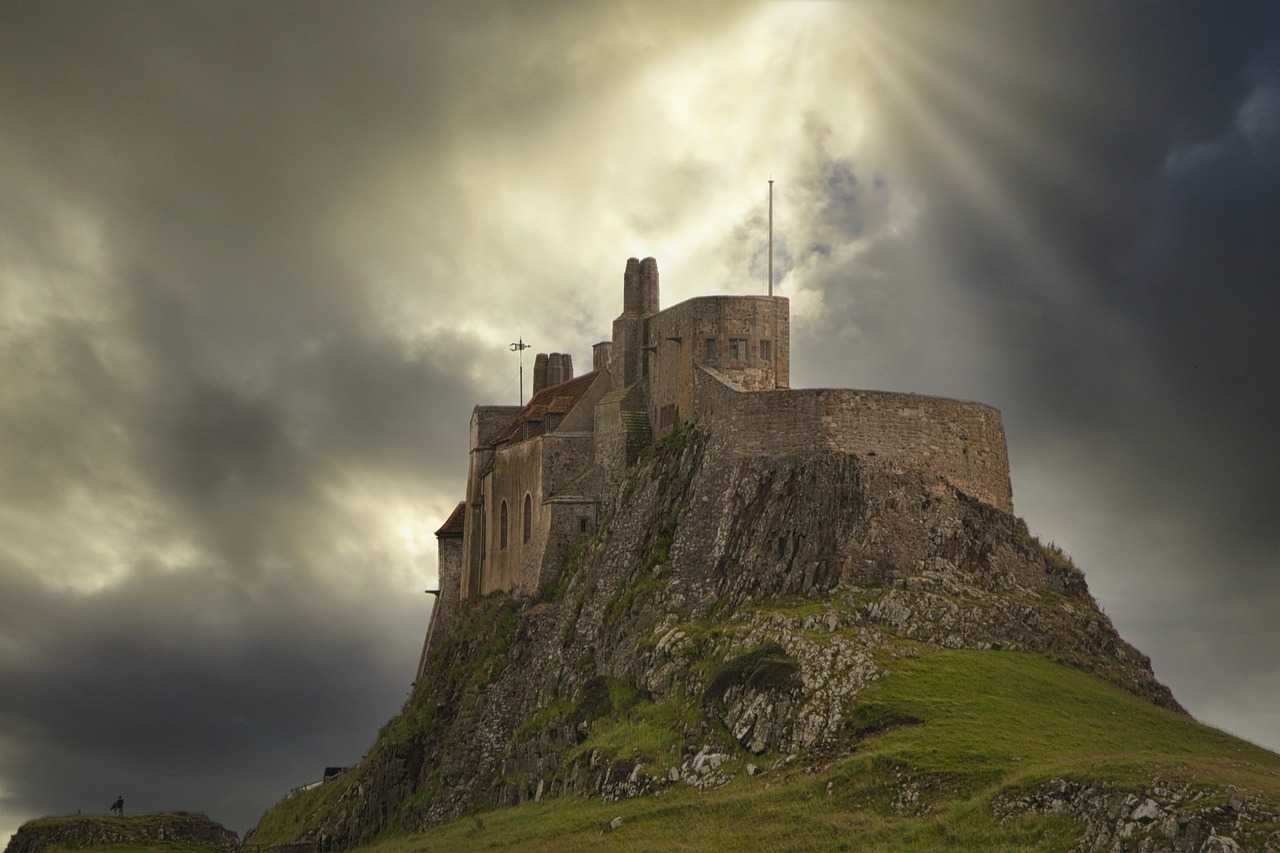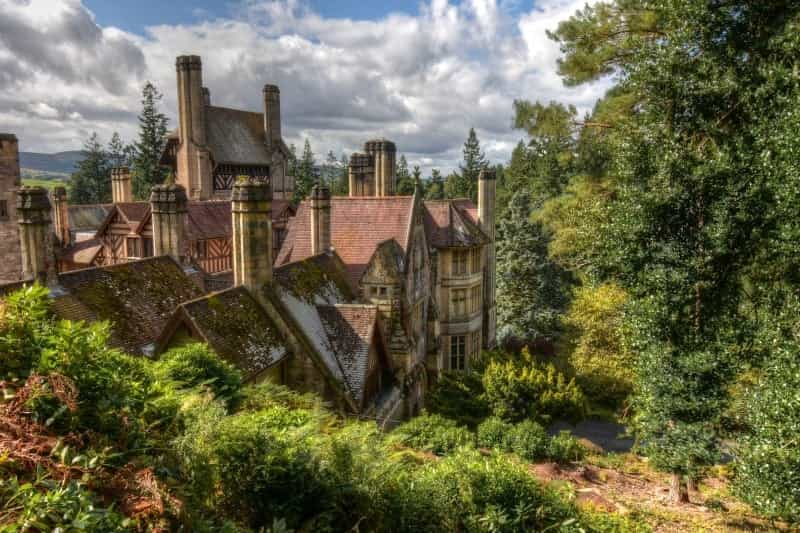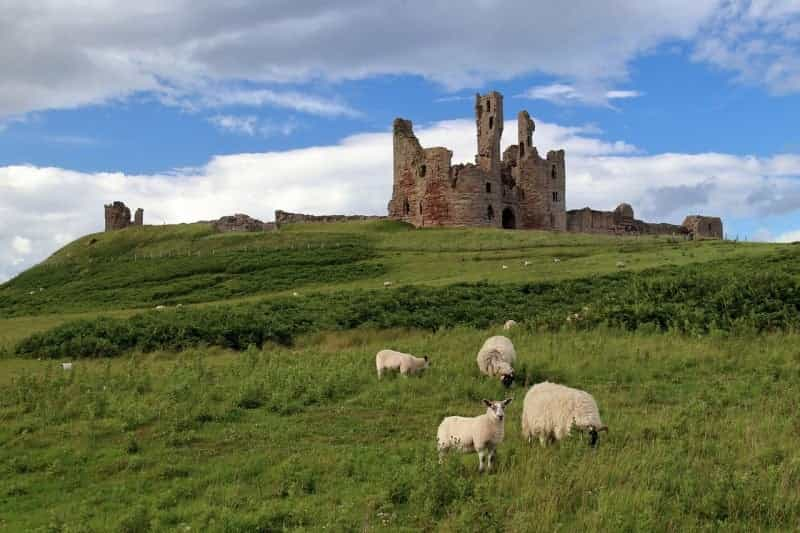7 Must-Visit Northumberland National Trust Sites
You might be surprised by just how many National Trust gems are hidden away in Northumberland. The county’s rugged coast and rolling hills are home to Lindisfarne, the Farne Islands, and Hadrian’s Wall – just north of the gorgeous Northumberland National Park, home to wild Kielder Forest and some of England’s darkest (read: starriest) skies.
Whether you’re heading to Northumberland solo, with friends, or with kids, there’s loads to discover here. You may well need to come back several times…
From world-famous heritage sites to lesser-known attractions (including the first house in the world to be powered by electricity), read on to discover the Northumberland National Trust sites you absolutely must visit.

Lindisfarne Castle
The Holy Island of Lindisfarne isn’t quite an island – to visit, you’ll need to wait until low tide, when its causeway is uncovered. Missionary monk St Aidan arrived here from Iona in 635 AD and founded Lindisfarne Priory, one of Anglo-Saxon England’s holiest pilgrimage sites. The original priory was devastated by 8th-century Viking raids, so the soaring arches and crumbling walls that survive today date from its 12th-century rebuilding.
Look east from the priory to see Lindisfarne Castle, a craggy 16th-century fortification built atop a volcanic plug. It possesses its own claim to antiquity – many of its stones were ‘borrowed’ from the ruins of the old priory. In 1901, Edward Hudson (founder of Country Life magazine) bought it and converted it into an Edwardian country house with the aid of architect Edward Lutyens, and it’s in this incarnation that visitors can see it today. Come in summer to see the Gertrude Jekyll Garden awash with colour below.
Hadrian’s Wall
Who hasn’t heard of Hadrian’s Wall? This massive structure took six years to build (it was begun in AD122) and stretches for 73 miles from coast to coast. It marked the outer fringes of the mighty Roman Empire, which at the time covered vast swathes of the globe.
The wall wasn’t just a defence against border attacks from the Picts: its forts, barracks and settlements were home to vibrant multicultural communities of soldiers (who came from all parts of the Empire) and civilians. Explore Housesteads Roman Fort (the most complete in Britain), see ancient artefacts at Chesters Roman Fort, and learn about Roman religious beliefs at Carrawburgh Temple of Mithras. Or simply bask in the wall’s craggy scenery as it snakes over wild Northumbrian landscapes. There are glorious walking routes all the way along – if time allows, you could even walk the length of the wall (it takes about 6-8 days). 
Cragside House and Gardens
Cragside’s name is very literal: it’s up on the top of a crag that tumbles down through thickly wooded glen to the rushing water of Debdon Burn. It was also the first house in the world to be lit by electricity.
This was the home of visionary Victorian couple Lord and Lady Armstrong. Lord William was passionate about innovation, engineering and science, while Lady Margaret had a deep love of the natural world. Together, they created a remarkable house, powered by hydroelectricity and packed with some of the Victorian world’s most advanced technology. The grounds house a colossal plant collection (the Armstrongs planted over seven million trees) including towering North American trees in the Pineteum; lily ponds and exotic glasshouse plants in the Formal Garden; and heather, which blooms along the Rock Garden’s winding pathways.
The Farne Islands
The Farne Islands are home to Britain’s most famous seabird sanctuary. Just getting here is an adventure, as the islands’ craggy shores are a couple of miles’ boat ride from Seahouses Harbour on the Northumberland coast. Keep an eye out for sea creatures as you glide over the waves – as well as puffins and other birds, the islands have a huge grey seal colony.
There are 15-28 islands here – depending on how high the tide is – divided into the Inner and Outer Farnes. At peak breeding season, they’re home to around 100,000 pairs of puffins, guillemots, terns, and a variety of other birds.
Inner Farne has links to Lindisfarne. This island is where St Cuthbert (Lindisfarne’s miracle-working prior) retired in 678 AD, and there’s a 14th-century church dedicated to him here. Fittingly, St Cuthbert was known as a protector of animals – legend has it that he allowed ducks to nest on the steps of his altar.
Allen Banks and Staward Gorge
Dog-walkers, this one’s for you. The River Allen cuts a deep gorge through both ancient woodland and Allen Banks’ ornamental woods, criss-crossed with miles of waymarked paths. Four-legged visitors need to be kept on the lead if you walk through farmers’ fields, but at all other times they’re free to roam as they please. Human visitors can look out for wildlife like red squirrels, the medieval ruins of Staward Peel tower, and stroll through the Victorian wilderness garden.
Wallington Hall
Woodland, walled gardens and rolling hills surround the ornate 17th-century mansion at Wallington. There’s so much to see here that it’s not humanly possible to cover everything in one go: pick a few options and plan for your next visit. Explore the hidden Walled Garden, hire a bicycle and pedal along the bike trail, or stop for a cuppa at the Clocktower Café. For families, there are play parks and plenty of chances to spot wildlife like roe deer, badgers and otters.

Dunstanburgh Castle
If dramatic ruined castles are your thing, head to Dunstanburgh. A 14th-century fortification built on a grand scale, it’s set on a windswept Northumbrian headland. Get here via a scenic coastal walk from the village of Craster (1.3 miles away), which has superb views of the castle’s great twin-towered keep and imposing walls.
There are lots of places to stay nearby: check out our guide to campsites in Northumberland, or go further and discover our ultimate guide to camping in the North East.
Other heritage sites
Northumberland has several historic sites that aren’t managed by the National Trust (they’re usually managed by English Heritage instead), but are well worth a visit. Top picks include Bamburgh Castle (a splendid Grade I-listed building that was once home to the Kings of Northumbria), 11th-century Alnwick Castle (which was used as a location for Hogwarts in the Harry Potter films), and Hexham Abbey’s glorious medieval architecture, lit by stained glass windows. Read our guide for more things to do in Northumberland.
Looking to get a little more ocean breeze in your lungs? Check out our guide to the best coastal walks in Northumberland.